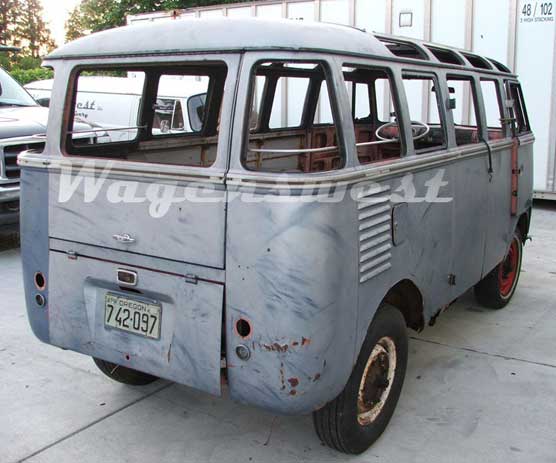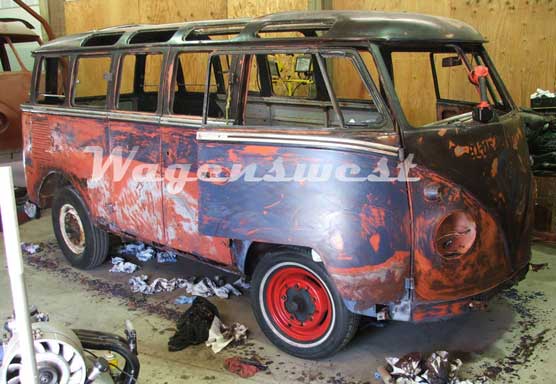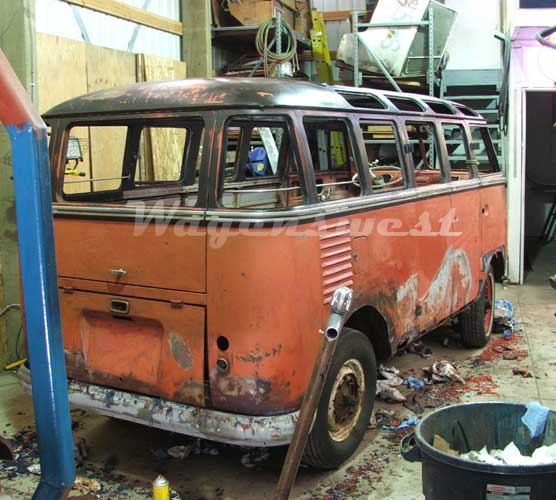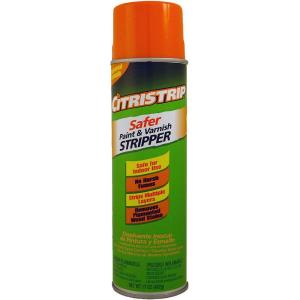How to restore factory paint under a cheap re-spray
One of the coolest things ever on an old VW or any classic car is patinaed original paint.
Over the years, many have tried desperately to remove layers of cheap paint to get to the precious factory colors; sometimes only to find out that the previous owner had a passion for sanding. In many cases the paint just can't be saved, but sometimes we get lucky.
Below are a few things that we have learned over the years.
Volkswagen buses that were built before 1959 seem to have a harder, more durable epoxy-like paint that is resistant to mild strippers. This can make it quick and easy to remove many low quality paints that were being sprayed 30 or so years ago.
Unfortunately, on buses built after 1959, with the exception of some 'coach built units' all have a weaker paint that will dissolve with even the mildest paint strippers. In this case the only option I know is wet-sanding for hours and hours with 300/400/800 grit paper until your fingers bleed. Oh, fun!
For those of you with an early bus, this is how we do it.
You will need: lots of rags or paper towels, rubber gloves, razor blades, a bucket and some of this stuff.
Spray on the citrus stripper and let it sit. After 5 - 10 minutes, check to see if the paint is loosening up. Once the paint starts to bubble, try wiping it off with the rag or scraping it with the razor at an almost parallel angle.
Wash off the leftover stripper and paint with water and a rag. Then start the process all over again.
Some of the paint may need to be removed via wet-sanding with 800-1200 grit sand paper. Once you know you’re done stripping paint, wash the area with water and soap.
When you use a paint stripper to remove a top coat, in most cases it will soften the base-paint that you are trying to keep. So, it is important to let it sit and air out for a few days before you color-sand and buff to a new car shine.
Hope this helps. If you find a good technique e-mail me.



